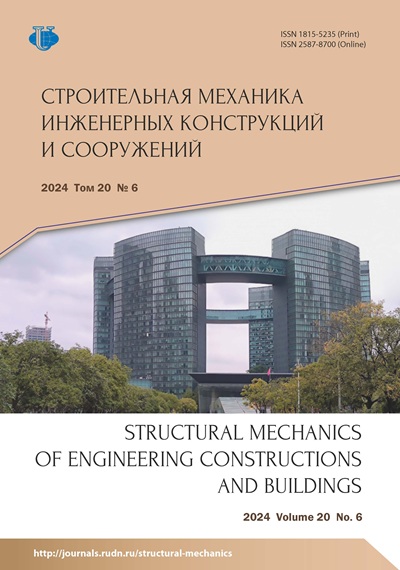Abstract
The possibility of using computational methods to take into account the service life, nonlinearity and rheology of deformation of the materials used and potential corrosion damage of various reinforced concrete structural elements already at the design stage, which will allow to determine cross-sectional dimensions and assign the required grades of concrete and reinforcement, is studied. The considered process of long-term deformation of reinforced concrete under varying external load conditions is based on the integral estimation method of deformation resistance, which relies on the use of integral deformation modulus. A method for calculating a reinforced concrete frame on a soil base in aggressive environment under the conditions of rheological deformation has been developed, which reflects the real operation of structural elements under the combined influence of force and non-force factors based on the modern phenomenological theory of deformation of an elastic creeping body. Long-term operation of a reinforced concrete frame on a soil base, taking into account corrosion damage, is evaluated. An example calculation of a reinforced concrete frame of a building on a soil base is given for various operation periods and the presence of corrosion damage. It is shown that damage due to exposure of reinforced concrete structures can affect the strength of the material, change the calculation models, redistribute stresses in the cross-sections of the structure and also lead to other consequences that reduce the design life of buildings.

















